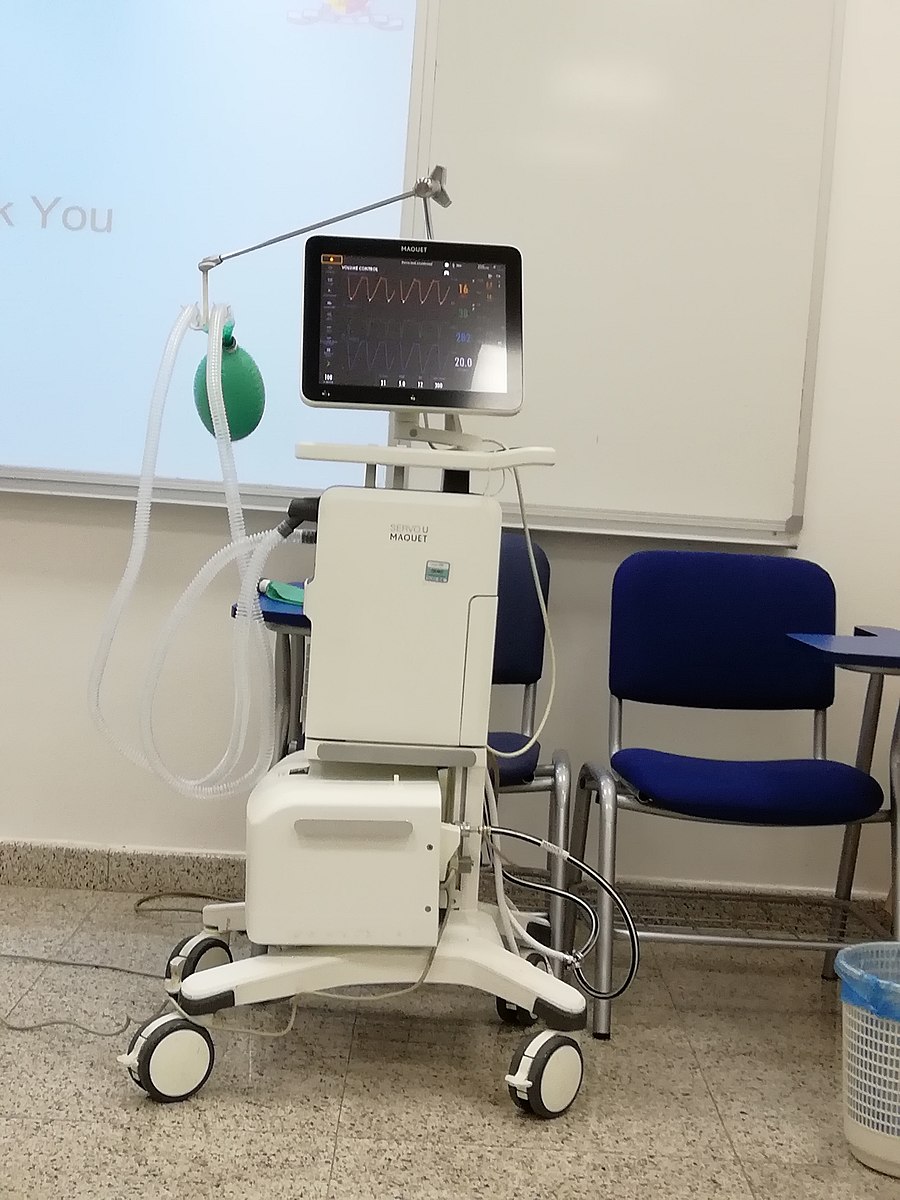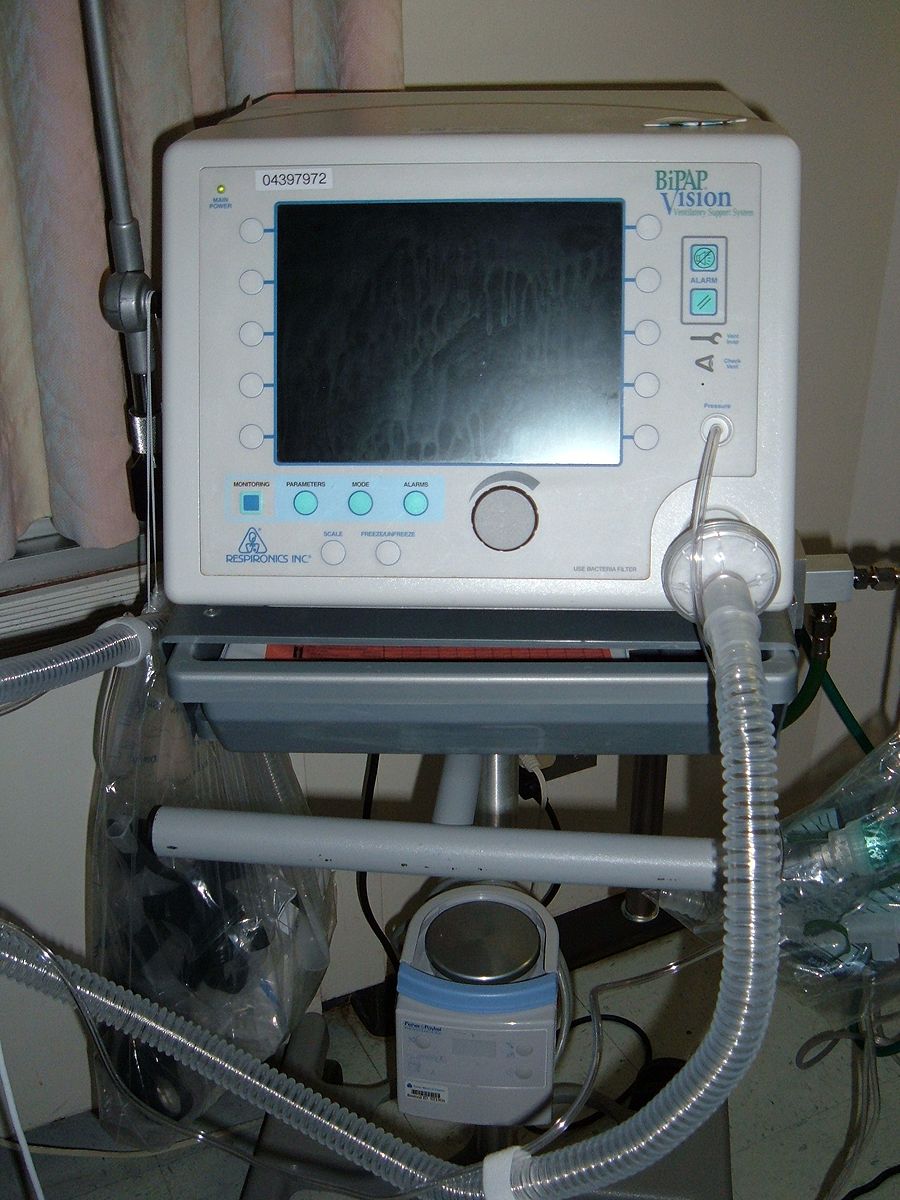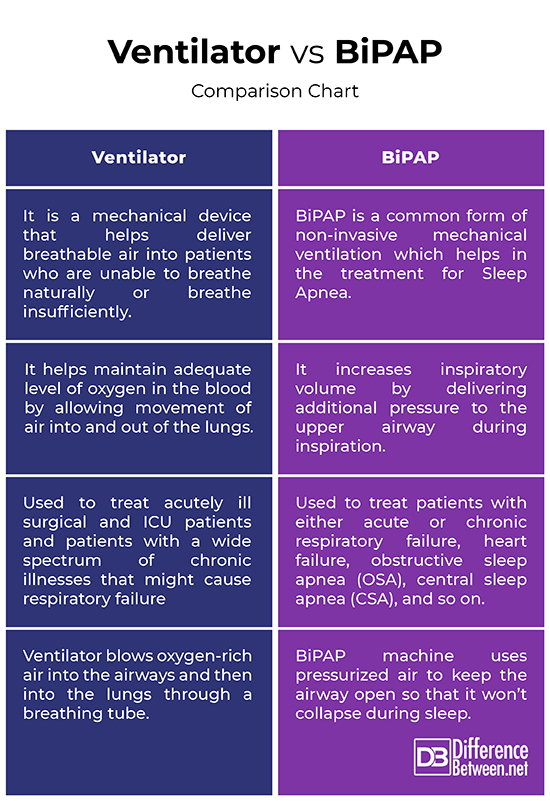Difference Between Ventilator and BiPAP
Mechanical ventilators have been the most widely used mode of life support in management of patients who are unable to breathe naturally or breathe insufficiently. Non-invasive positive pressure ventilation (NPVV) has become an integral part of ventilator support in patients with acute or chronic respiratory failure. That being said, BiPAP is one of the most common non-invasive mechanical ventilation therapies used in acute respiratory failure caused by a wide spectrum of chronic illnesses, most commonly chronic obstructive pulmonary disease (COPD).

What is a Ventilator?
Ventilator is a life-support machine that enables patients, who have trouble breathing naturally, to breathe mechanically. It is a medical device that provides mechanical ventilation in order to deliver breathable air into patients who are unable to breathe or breathe insufficiently. Ventilators are called life-support machines for a reason because they buy us time. The machine keeps oxygen going to the brain, the heart, and the kidneys. It helps maintain adequate level of oxygen in the blood by blowing air into the lungs. Ventilators are widely used in management of acutely ill surgical and ICU patients as well as in the chronic support of patients with a wide range of chronic diseases that might result in respiratory failure. For years, ventilators have been the most commonly used mode of life support in medicine and healthcare. A ventilator is also known as a respirator, mechanical ventilator, or breathing machine.

What is BiPAP (Bilevel Positive Airway Pressure)
BiPAP is a type of positive pressure ventilator that increases inspiratory volume by delivering additional pressure to the upper airway during inspiration. It is a form of non-invasive mechanical ventilation which helps in the treatment for Sleep Apnea. BiPAP is one of the most common non-invasive mechanical ventilation therapies, the other being CPAP (Continuous Positive Airway Pressure). While most of the components of a BiPAP ventilator are same as the CPAP ventilator, with BiPAP, the pressurized air is delivered at two alternating levels meaning inspiratory and expiratory pressures can be set independently. The airways pressure is positive in BiPAP, but more so during inspiration than expiration. Breathing is spontaneous and airway pressures fluctuate around the two set levels. It is often used for limited periods, usually at night or followed by naps, when natural respiratory effort is not possible. It can be used to treat patients who cannot tolerate CPAP.
Difference between Ventilator and BiPAP
Device
– Ventilator, often called a life-support machine, is a mechanical device that helps deliver breathable air into patients who are unable to breathe naturally or breathe insufficiently. It is a medical device that provides mechanical ventilation to inflate and deflate the lungs of a patient whose own respiratory abilities are diminished or lost.
A BiPAP, short for “Biphasic (bilevel) Level Positive Airway Pressure” machine, is a form of non-invasive mechanical ventilation which helps in the treatment for Sleep Apnea – a potentially serious sleep disorder which causes disrupted breathing during sleep such as obesity related hypoventilation. BiPAP some times can be used to buy time before intubation or used for respiratory distress to relieve work of breathing.
Function
– A ventilator is a life support machine for your body which helps you in whole respiration process, thereby maintaining adequate level of oxygen in the blood by allowing movement of air into and out of the lungs.
BiPAP, on the other hand, is a type of non-invasive form of therapy for patients suffering from severe obstructive sleep apnea, COPD (Chronic Obstructive Pulmonary Disease), or any other health condition that affects your breathing pattern during sleep. BiPAP machine uses pressurized air to keep the airway open so that it won’t collapse during sleep.
Working
– A ventilator is machine that supports breathing; it blows air – or air with extra oxygen – into the airways and then into the lungs through a breathing tube. One end of the breathing tube goes into the windpipe of the patient who has trouble breathing and the other end of the tube is attached to the ventilator. The airways carry breathable air into the patient’s lungs.
BiPAP, on the other hand, uses dual pressure settings; higher pressure is delivered during inhalation while lower pressure is delivered during exhalation. The two pressure settings allow patients to inhale and exhale more air out of the lungs.
Clinical Uses
– Mechanical ventilators are the most commonly used mode of life support that is used in the management of acutely ill surgical and ICU patients as well as to treat patients with a wide spectrum of chronic illnesses that might cause respiratory failure, such as head trauma, drug overdose, etc.
BiPAP, on the other hand, is an external mechanical respiratory assistant often used to treat patients with either acute or chronic respiratory failure, heart failure, obstructive sleep apnea (OSA), central sleep apnea (CSA). BiPAP machines are also used to treat a wide range of other conditions that may lead to respiratory distress, including shock, head trauma, poisoning and metabolic upset.
Ventilator vs. BiPAP: Comparison Chart

Summary of Ventilator vs. BiPAP
In a nutshell, ventilators are life-support machines that help deliver breathable air into patients who are unable to breathe naturally or breathe insufficiently. Ventilators buy us time by keeping oxygen going to the brain, the heart, and the kidneys. BiPAP, one the other hand, is a type of positive pressure ventilator that encompasses positive airway pressure delivered via a mask to a spontaneously breathing patient. BiPAP uses dual pressure settings, allowing patients to inhale and exhale more air out of the lungs.
- Difference Between Caucus and Primary - June 18, 2024
- Difference Between PPO and POS - May 30, 2024
- Difference Between RFID and NFC - May 28, 2024
Search DifferenceBetween.net :
Leave a Response
References :
[0]Sumner, Charlotte J., et al. Spinal Muscular Atrophy: Disease Mechanisms and Therapy. Cambridge, Massachusetts: Academic Press, 2016. Print
[1]Papadakos, Peter J. and B. Lachmann. Mechanical Ventilation E-Book: Clinical Applications and Pathophysiology. Amsterdam, Netherlands: Elsevier, 2007. Print
[2]Truwit, J.D. and S.K. Epstein. A Practical Guide to Mechanical Ventilation. Hoboken, New Jersey: John Wiley & Sons, 2011. Print
[3]Esquinas, Antonio. Noninvasive Mechanical Ventilation: Theory, Equipment, and Clinical Applications. Berlin, Germany: Springer, 2010. Print
[4]Image credit: https://commons.wikimedia.org/wiki/File:Mechanical_ventilator.jpg
[5]Image credit: https://commons.wikimedia.org/wiki/File:BiPap_Vision_ventillator.JPG
